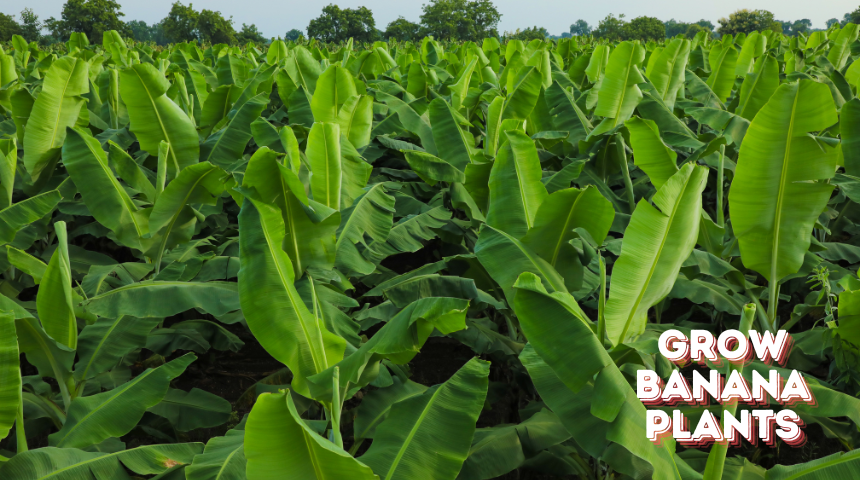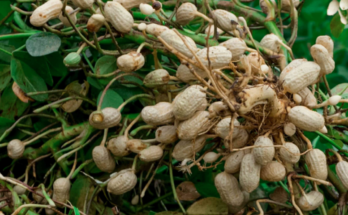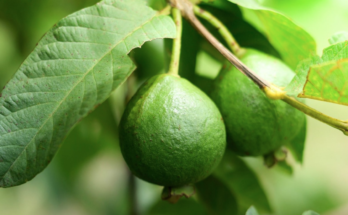Welcome, plant enthusiasts! Embarking on the journey of cultivating banana plants can be immensely rewarding. In this guide, I’ll share my expertise on How to grow banana plants? successfully.
From selecting the right variety to nurturing the soil, let’s dive into the essentials of fostering these tropical wonders. Let’s get those banana dreams thriving!
How To Grow Banana Plants?
Growing banana plants is a rewarding endeavor. Start by choosing a healthy banana rhizome. I recommend selecting a banana variety that suits your climate. Plant it in well-draining soil with plenty of organic matter.
Ensure the site gets full sunlight for at least 6 hours a day. Water regularly, keeping the soil consistently moist but not waterlogged.
Fertilize every 2-3 months with a balanced fertilizer. Mulch around the base to retain moisture and suppress weeds. Prune dead leaves to encourage healthy growth.
Protect young plants from strong winds. Harvest bananas when they are firm and have a full color. With proper care, you’ll enjoy the satisfaction of nurturing your own banana plant.

Kind Of Bananas
When delving into the world of bananas, it’s essential to know about the two primary types: dessert bananas and plantains. Dessert bananas, such as the ubiquitous Cavendish, are sweet and typically eaten raw.
On the other hand, plantains are starchy and commonly used in cooking. Plantains need to be cooked before consumption and are a staple in various cuisines.
Understanding the distinction between these two types will help you choose the right variety based on your culinary preferences and intended use.
Know the Basics of Bananas
1.Ideal Weather and Location for Banana Cultivation.
Bananas thrive in tropical climates with temperatures between 78-86°F (25-30°C). Select a site with well-draining soil and full sun exposure. They are sensitive to frost, so ensure a frost-free environment.
2. Setting up Banana Cultivation.
When planting bananas, create a shallow hole and position the rhizome with the shoot facing up. Bury it at a depth that covers the roots. Water the plant immediately after planting and maintain consistent moisture.
3. Adjusting Banana Plant Distances
Adequate spacing is crucial to prevent overcrowding and allow proper airflow. Space banana plants about 8 to 10 feet apart, depending on the variety.
4. Banana Growth Process
Bananas grow from a pseudo stem, a tightly packed series of leaf bases. A flower cluster emerges from the top, and bananas develop from the ovaries of the flowers.
5. Reproductive Process in Bananas
Most bananas are parthenocarpy, meaning they don’t require pollination. The fruit develops without the need for fertilization. However, some varieties may benefit from pollination.
6. Growth of Banana Produce
After pollination, the banana flower transforms into a cluster of bananas. The fruit develops sequentially, and it takes several months for the bananas to reach maturity.
7. Containerized Banana Growth
Opt for dwarf banana varieties if growing in containers. Use well-draining soil, and ensure the container has drainage holes. Container-grown bananas may require more frequent watering.
8. Providing Water to Banana Crops
Bananas need consistent moisture, especially during dry periods. Water deeply, ensuring the soil remains evenly moist but not waterlogged.
9. Fertilizing Banana Plants
Fertilize banana plants monthly during the growing season with a balanced fertilizer. Use a mix that includes nitrogen, phosphorus, and potassium for optimal growth.

10. Caring for Banana Plants
Provide support for growing fruit clusters by using stakes. Shield young plants from strong winds, which can damage the leaves and affect overall growth.
11. Shaping Banana Growth
Remove dead or damaged leaves regularly to promote a healthier plant. Pruning also helps manage the size of the banana plant and improves air circulation.
12. Diseases Affecting Bananas
Be vigilant for diseases like Panama wilt, caused by a soil-borne fungus. Ensure good drainage, avoid waterlogging, and practice proper sanitation to prevent diseases.
13. Pest Infestation in Bananas
Keep an eye out for common pests such as aphids and spider mites. Use organic or chemical controls as needed, addressing infestations promptly.
14. Picking Ripe Bananas
Harvest bananas when the peel is fully yellow with no green remaining. If the bananas are picked while still green, they may not ripen properly.
15. Preserving Bananas
Store harvested bananas at room temperature. To slow down ripening, refrigerate ripe bananas. Avoid placing unripe bananas in the refrigerator, as this can hinder the ripening process.

16. Cooking with Bananas
Enjoy bananas raw as a quick and nutritious snack. Experiment with plantains in cooking; they are versatile and can be fried, boiled, or used in savory dishes.
17. Spreading Banana Growth
Propagate bananas through division, using offshoots (suckers) that grow around the base of the mature plant. Plant these offshoots to establish new banana plants.
18. Selecting Types of Bananas to Grow
Explore diverse banana varieties based on your preferences and local climate. Common types include Cavendish, known for its sweetness, Lady Finger for a smaller size, and Red Dacca for its distinctive red peel.
Choose varieties that suit your taste and cultivation conditions.
FAQ
What is the best climate for growing banana plants?
Bananas thrive in warm tropical climates with temperatures between 78-86°F (25-30°C).
Can I grow bananas in containers?
Yes, choose dwarf varieties and use well-draining soil for successful container cultivation.
How often should I water banana plants?
Keep the soil consistently moist, watering deeply, especially during dry periods.
Do bananas need fertilization?
Yes, fertilize monthly during the growing season with a balanced mix containing nitrogen, phosphorus, and potassium.
When is the best time to harvest bananas?
Harvest when the peel is fully yellow with no green remaining for optimal flavor.
Conclusion
Happy growing, Banana enthusiasts and Friends. Embrace the journey of cultivating your banana paradise with these simple yet effective tips.
Remember to choose the right variety, provide consistent care, and relish the joy of watching your banana dreams come to life. Growing banana plants is a delightful journey of patience and passion.
With the right care, proper nurturing, and a sprinkle of enthusiasm, you’ll soon be enjoying the sweet rewards of your banana harvest. So, roll up those sleeves, get your hands in the soil, and let the banana-growing adventure begin!




One Comment on “How To Grow Banana Plants?”